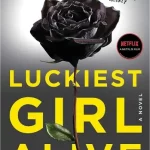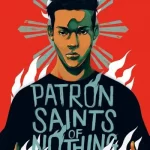
2 Sentence Summary
Brit Bennett’s The Vanishing Half is an incredible novel that explores into the complexities of identity, family, and race. The book offers beautiful prose and a captivating story spanning generations. Bennett explores the bonds between women, the impact of the Black experience in America, and the weight of societal expectations.
Summary Read Time: Less than 7 minutes
Actual Book Length: 343
First Published in: 2020
Below is the detailed yet quick The Vanishing Half summary:
Part 1: The Lost Twins (1968)
In the quaint farm town of Mallard, Louisiana, built on the dreams of a light-skinned black man, we’re introduced to the light-skinned Vignes twins, Stella and Desiree, his descendants. At sixteen, they break free from their hometown and their humble background. While Desiree marries a black man and has a child, Stella veils her identity, passing off as white. After their escape to New Orleans, Stella disappears, leading Desiree to relocate to D.C, where she works for the FBI. A violent marriage later, Desiree returns to Mallard with her daughter, Jude.
During this time in 1968 New Orleans, Early Jones, a bounty hunter with a knack for finding people, is entrusted by Sam, Desiree’s estranged husband, to locate her. Early’s memories of Desiree from a summer spent in Mallard serve as a familiar beacon. Meanwhile, the twins’ past haunts their memories – a brutal murder of their father by white men under false accusations, leaving indelible scars.
In Mallard, Desiree reintegrates into her old life, albeit with roadblocks due to her daughter’s dark skin and her own race. An encounter with Early Jones at a local bar rekindles old affections and brings to light Desiree’s brutal past. As Desiree dives into her new life at a local diner, she shares with Early her last contact with Stella. Intrigued and sympathetic, Early promises to track down Stella, turning a blind eye to Sam’s requests. A reluctant trip to New Orleans in search of Stella presents a new lead, directing them to Boston, setting the stage for an unexpected journey.
Part 2 – Maps (1978)
1978 sees Jude, Desiree’s daughter, arriving in Los Angeles as a freshman track scholar at UCLA. Bearing the emotional scars of her isolated, dark-skinned upbringing in Mallard, she yearns for answers about her violent father. Desiree, now back home for a decade, entertains the sporadic visits of Early, who has been unsuccessful in tracing Stella, a trail that went cold in Boston. His efforts are undermined by Stella’s obvious desire to remain hidden. Although he continues to quietly monitor Sam, now residing with a new family.
In college, Jude forms a close bond with Reese Carter, a trans man from Arkansas who works as a cleaner and has a passion for photography. Their friendship, initially roommates, evolves into love. They share intimate stories about their first kisses, Jude revealing hers to be with a boy who bullied her in daylight, but met her secretly at night. Reese shares his first experience with a girl from his church.
Reese shares his painful past, explaining that he fled home following a violent reaction from his father when he was caught with his sister’s friend, presenting as a man. He aspires to undergo surgery, but the costs are daunting due to the associated risks. To help, Jude takes a higher-paying job, working for a catering service. During a posh retirement party, Jude drops a bottle of wine in shock when she encounters a girl with striking violet eyes and the woman accompanying her.
Part 3 – Heartlines (1968)
In 1968, as Desiree finds herself back in Mallard, Stella, now living as Stella Sanders, resides in Brentwood. A volatile Homeowners’ Association meeting sees her unexpectedly advocating against letting a black family into the neighborhood, despite her own hidden racial identity. She and her husband Blake, a Yale graduate from a well-off family, share a privileged life with their daughter, Kennedy. Blake is oblivious to Stella’s true past, which includes a harrowing stint as a cleaner for the sexually abusive Mr. Dupont.
The house in contention is sold to the Walkers – Reginald, a renowned black actor, and his wife Loretta, along with their daughter Cindy. Initially, the neighborhood’s hostility eases. Stella herself, despite her initial protests, grows closer to Loretta, often visiting while Blake is at work. She battles an overwhelming desire to reveal her true identity to her friend. Stella subtly advises Loretta against fighting the school system for Cindy, who ends up attending a black school. This period witnesses the tragic assassinations of Martin Luther King Jr. and Robert F. Kennedy.
Stella’s past resurfaces as she reflects on the liberating feeling of passing as white in New Orleans, a freedom encapsulated in her relationship with Blake. Her current reality is far less idyllic, with neighborhood gossip about her unusual friendship with Loretta escalating. After their annual Christmas party ends in a dispute over Stella’s lies to Blake, their world is further shaken when Kennedy, influenced by the prevalent racial bias, uses a racial slur against Cindy. This ends the friendship between the families and catalyzes a string of racist attacks against the Walkers, leading to their departure by March.
Part 4 – The Stage Door (1982)
In 1982, our beloved Jude finds herself hustling, juggling between a waitressing job and her medical school applications. Reese, her constant companion, works at a Kodak store, their lives shadowed by financial constraints. Haunted by the resemblance of a woman she saw at a party to her mother, Jude speculates if she could be Stella. In an unexpected twist, her path crosses with this woman’s daughter, Kennedy, who also happens to be part of a musical comedy show at the Stardust Theater, alongside Barry. Despite Kennedy’s decision to drop out of USC for acting, Jude cajoles her into admitting Stella as her mother.
Stella, meanwhile, navigates her own journey, reinventing herself as an adjunct professor at Santa Monica College. Filling the void left by Loretta’s departure, she finds solace in education. She earns herself a degree at Loyola Marymount University, with future aspirations of a master’s or PhD. As her life takes this new turn, Stella attempts to persuade Kennedy to return to her studies.
Jude, hopeful and driven, joins the Stardust Theater as an usher, in an attempt to grow closer to Kennedy. Her desire to know more about Stella supersedes Reese’s concerns and the harsh judgment of the other cast members. Stella makes an unexpected appearance during the final show, where Jude boldly confronts her about being Desiree’s daughter. She dismisses this as a part of her past life and hastily leaves, resulting in a dramatic showdown between a distraught Kennedy and Jude. This leads to the truth about Stella and Mallard. Stella continues to deny her past to Kennedy and brushes off the encounter with Jude to Blake. As the chapter closes, Stella and Blake present Kennedy with an ultimatum regarding her future. All this while Stella’s guarded past subtly emerges during a moment of candid conversation with Kennedy.
Part 5 – Pacific Cove (1985-1988)
As we approach 1988, we find a 27-year-old Kennedy adapting to her role as a soap opera actress on the show “Pacific Cove.” Although she initially feigns ignorance, Kennedy instantly recognizes Mallard, a truth revealed to her by Stella during her childhood. Stella, however, later denies this fact, asserting that she is from Opelousas instead.
Our timeline rewinds to 1985, when Kennedy fortuitously encounters Jude once again in New York. There Kennedy is dating a Columbia physics professor, Frantz, and performing in an off-Broadway musical. Despite Kennedy’s aloofness, she agrees to meet Jude after her show, who is in town with Reese for his surgery. After the show, Jude presents Kennedy with an old photograph featuring their mothers, an event that stirs up emotions and triggers a chain of events. Kennedy seeks Jude in the hospital, patiently waiting for Reese’s surgery to conclude. There she confronts Stella with the picture, only to be met with denial once more. Shortly after, Kennedy breaks up with Frantz. As the 1990s dawn, Kennedy’s acting career dwindles, leading her to embark on a successful new venture in real estate.
Part 6 – Places (1986)
In the early 80s, the U.S. Geological Survey deems Mallard too diminutive to qualify as a town, amalgamating it into the city of Palmetto. Come 1986, Stella, estranged from Kennedy due to the photograph incident, finds herself journeying back to Mallard-now-Palmetto with a mission. The mission is to appeal to Desiree, hoping she would convince Jude to distance herself from Kennedy. Meanwhile, Desiree, now managing Lou’s, and Reese, affirm their mutual affection for Jude, who’s attending medical school in Minnesota while Reese takes on freelance photography work.
Meanwhile, Mallard’s currents of change sweep over its remaining residents. The tragic demise of Big Ceel over a paltry gambling dispute leads Early to seek a steady job at the oil refinery. Alongside, he assists Adele, suffering from Alzheimer’s. Stella’s return finds her sitting with an unresponsive Adele, with Desiree later being fetched from Lou’s. An initially furious Desiree ultimately forgives Stella, leading to a tense but sincere reunion. However, Stella’s reluctance to reveal the truth to Kennedy meets a reluctant acceptance from Desiree, acknowledging their distinct paths. Stella’s quiet departure sees her handing her wedding ring to Early for Adele’s care.
Stella’s life experiences another shift with Kennedy’s return. Exhausted from her chronic deceit, Stella finally discloses the truth about her past to Kennedy. Post which Kennedy agrees to withhold the information from her father. On a sadder note, Adele’s passing prompts Jude’s return home, revealing her continued connection with Kennedy. Accompanied by Reese, they are welcomed by Early. As life unfolds, Desiree and Early relocate to Houston. Despite Desiree’s urging for Jude to live a “big life” like Stella, Jude lovingly asserts her contentment with her own life. Her gratitude towards Desiree marks a poignant finale to the narrative.





